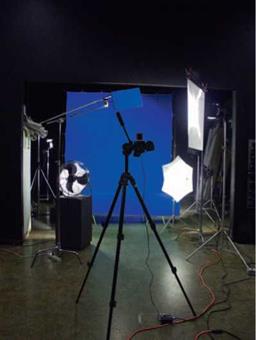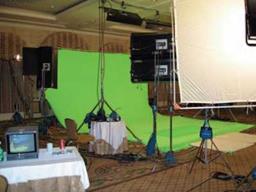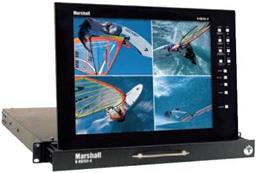Motion Pictures in Digital: Motion pictures that are shot digitally are films in which their images are captured on digital formats. These images can be taken with any media that can use digital technology. Digital cinematography is a term usually used to describe when film is being substituted for digital. Cinematography digital cameras are usually progressive high-definition formats. Cameras for digital motion pictures are becoming more and more advanced and easier to use with already-existing camera lenses for film.
Resolution in Digital: This is a little more complex than what you would assume.
Each pixel of the image is partial toward red, green, or blue. The color image is taken from this pattern of colors. Film stock has a certain amount of grain to the image, which some people feel is lacking with digital pictures. However, a high-end DP knows how to light and use the correct filters to get the same images and textures of film. Color grading is often created digitally instead of using a photochemical process.
High-Definition Television: HDTV is a television broadcast using higher-resolution formats. When considering resolution, the screen and how the image is transmitted come into play. HDTV has a least twice the resolution of standard television. The picture on HDTV is clearer, with better color spectrum.
Digital Television: DTV is a
telecommunication system for broadcasting. Pictures and sound are received by digital signals. Digital television systems can carry both standard-definition and high-definition formats. Digital television can be received in different ways: aerial, pay-TV, digital cable, digital satellite, and DTV monitor.
Digital Photography: Images are captured with electronic devices that record the images on binary data. Digital photography image quality is expressed by pixel counts
![]() and the way the camera can turn data into the correct color balance.
and the way the camera can turn data into the correct color balance.
Photographic Film: Can be polyester, nitrocellulose, or cellulose acetate. The film is coated by silver halide salts that are suspended by gelatin. When exposed to light, it forms an image. The film is put through a chemical process to expose that image.
Black-and-White Film: There is one layer of silver salts. When grains are developed, the salts are converted into metallic silver. This blocks the light and will be exposed as the black part of the negative.
Color Film: Uses three layers. Dyes are added to the silver salts, which in turn become more sensitive to color. The layers are usually blue, green, and then red. When the film is being processed, the salts turn into metallic silver, which reacts by forming colored dyes.
Print Film: Print film when processed turns into a negative. The negative can be color or black and white. Print film must be viewed by being printed on photographic paper or observed through a lens.
Bluescreen (Figure 5.2): Is used often for shooting people. Skin tones (reds, yellows, and greens) are opposite of the blue background. Bluescreen works by photographing or filming an actor in front of a blue background. Shades of blue should not be used while shooting bluescreen. The blue makeup might cause a spill format in the background to appear on the surface of the face. With incorrect colors, the face can almost start to look transparent. Warm colors work best. When
|
FIGURE 5-2: BLUESCREEN Photo by: www. eefx. com – chroma key screens and supplies |
shooting for bluescreen, lights and gels are often used to cast off yellow, orange, and warm tones. This is all to keep the actor separated from the background.
Greenscreen (Figure 5.3): Is often used in the same way as bluescreen. Greenscreen has a stronger luminance than blue and shows more detail. Because of this clarity, greenscreen is used often for special effects. Special effects can also include people in the shot. The same principle applies as far as makeup. Leave out colors that will blend with the background to avoid makeup that could cause spills and transparency to your work.
Example: Superman flying through Manhattan.
|
FIGURE 5-3: GREENSCREEN Photo contributed by Bob Kertesz, www. bluescreen. com |
|
FIGURE 5-4: MONITORS Photo contributed by: www. Marshallelectronics. net |
Whitescreen: Is used for a variety of reasons. The background is white, which adds to the contrast between screen, clothes, makeup, and hair. There are no wrong or right choices except to watch colors that are pale, clothes that are pastels or white. These colors might blend into the background.
Monitors (Figure 5.4) help the Makeup Artist to judge how the makeup looks under the lighting conditions on the set. Paul Wheeler:
Monitors are set up for the director and DP first. Where they are set up and how will keep the AC (Assistant Camera) busy. The practice I like is for the Second AC to cable from a single primary source on the camera a feed for the monitor the Director and DP will be using. When this is done, a second feed, totally independent from the first feed, is supplied for everyone else to tap into. The Second AC can rig a single monitor for the Script Supervisor, Makeup, Hair, and Costume. That is, if the DP allows it.
In some situations, there will be different areas for viewing, as Paul Wheeler describes. It not only depends on the DP, it also depends on the Director. The Director and the DP will decide where and how many setups of monitors there will be. One monitor for just the Director and the DP allows them to work in a quiet environment, without the distraction of others, or to work in private. It is very common to have two setups for monitors. There can also be a third setup for monitors for the clients, visiting guests, studio executives, and so on. If a monitor is not provided for you, and you need to check your work, ask the First AD if a monitor can be set up for you. Remember, every set is different. Some jobs will have monitors available for you, and some will not.
Here are a few examples of monitors to look for:
Cathode Ray Tube: CRT monitors are also available in true progressive-scan monitors.
High-Definition Monitor: A good monitor for the Makeup Artist to view. You will get

![]()
 a real image of what to expect, and the details will enhance any flaws. Talented DPs will actually use this monitor to light the set.
a real image of what to expect, and the details will enhance any flaws. Talented DPs will actually use this monitor to light the set.
Liquid Crystal Display: LCD monitors usually found attached to the camera or on a flexible arm that allows the Focus Puller (First AC) to see the action being shot.
This monitor is lightweight and nice to look at, but is not the right monitor to check for colors and lights and how they affect your makeup.
Plasma Screens: Available in larger screens, often between 42 and 61 inches. They have a little less quality than the CRT monitors.
|
|
PRO TIP
In filming situations, if you need to check your makeup, ask the DP or Camera Operator for permission to look through the lens. This way, you are seeing the image with gels, filters, and the lighting in place. Sometimes in film, using the monitor is not the best way when checking or correcting your makeup.



